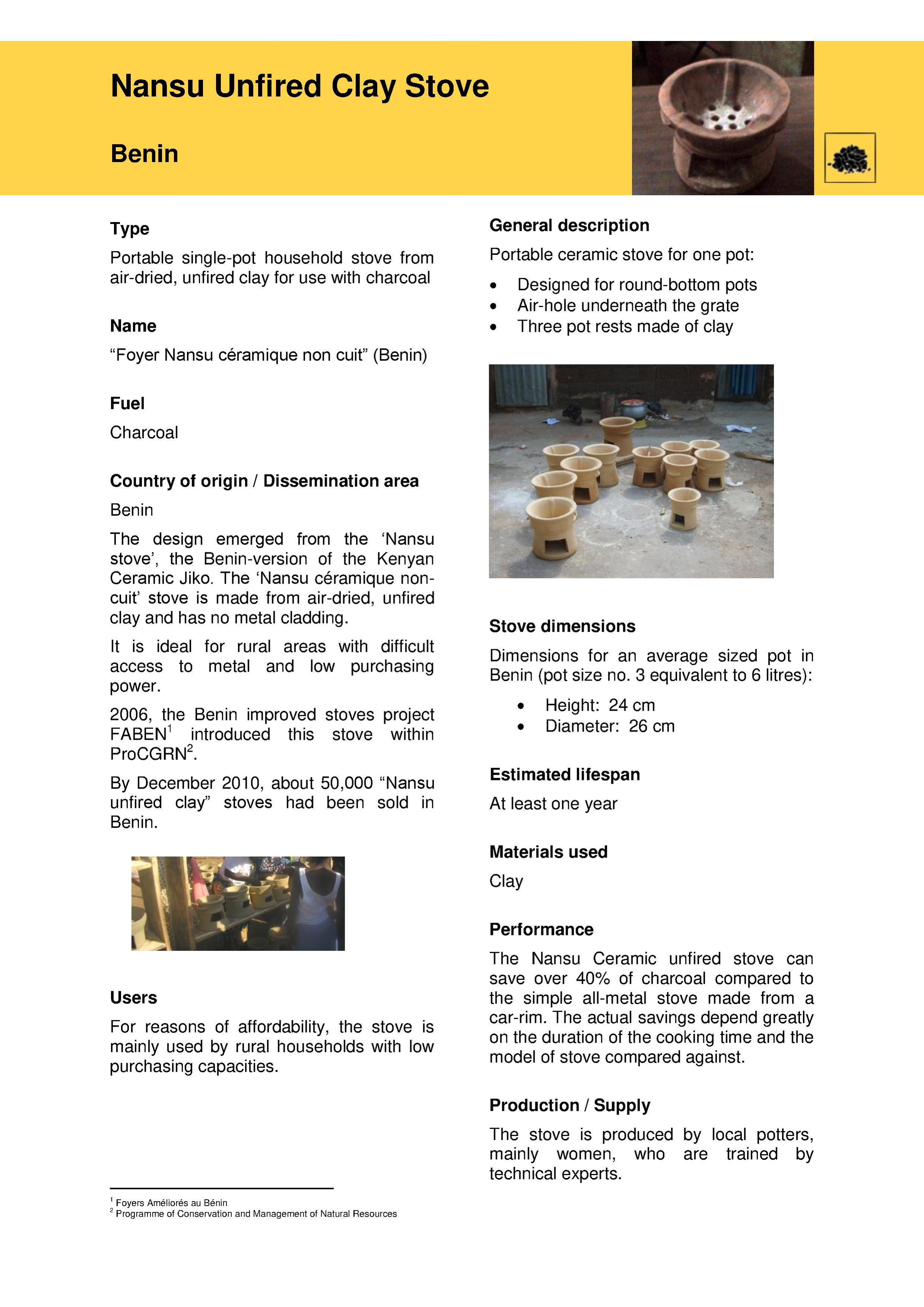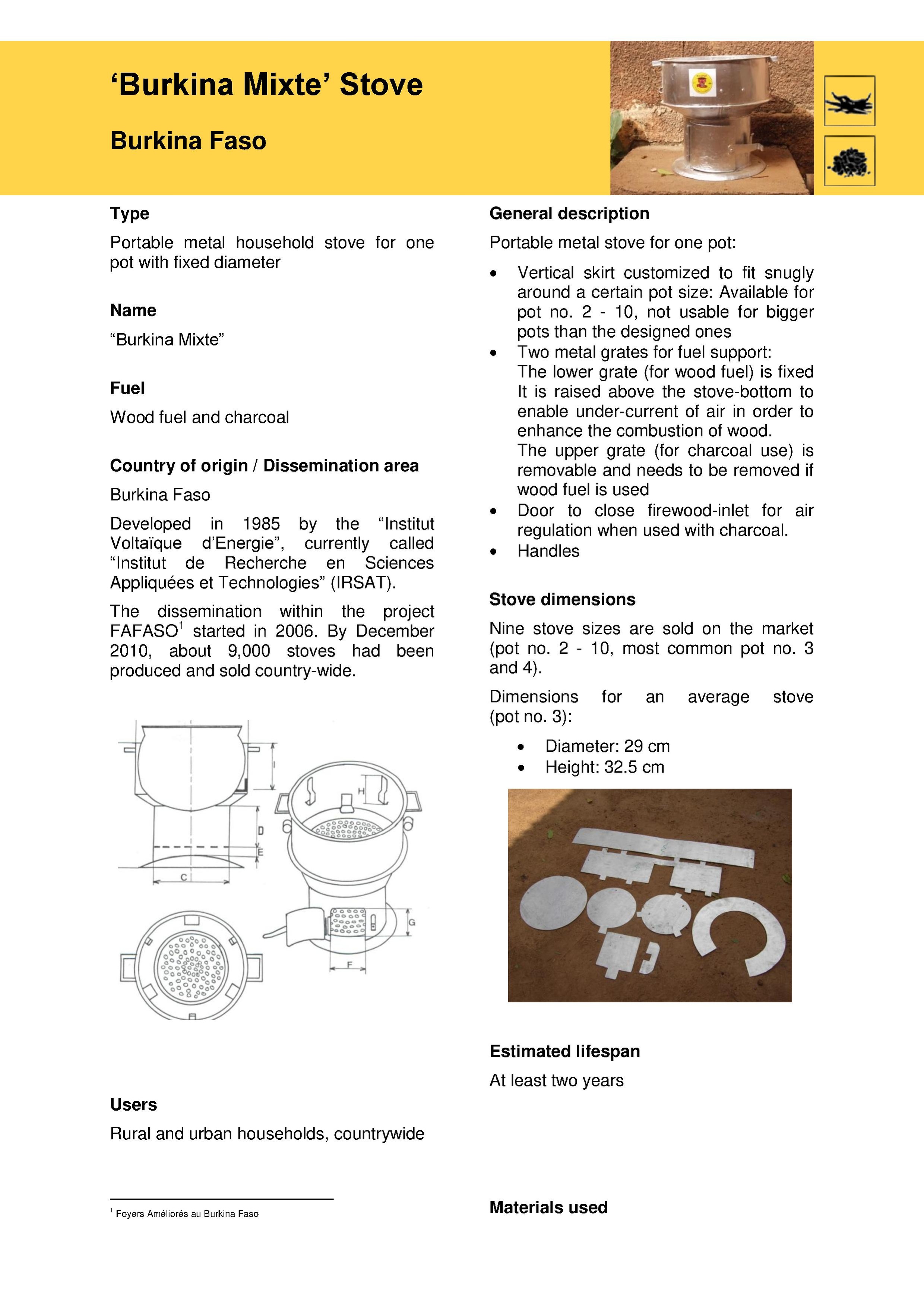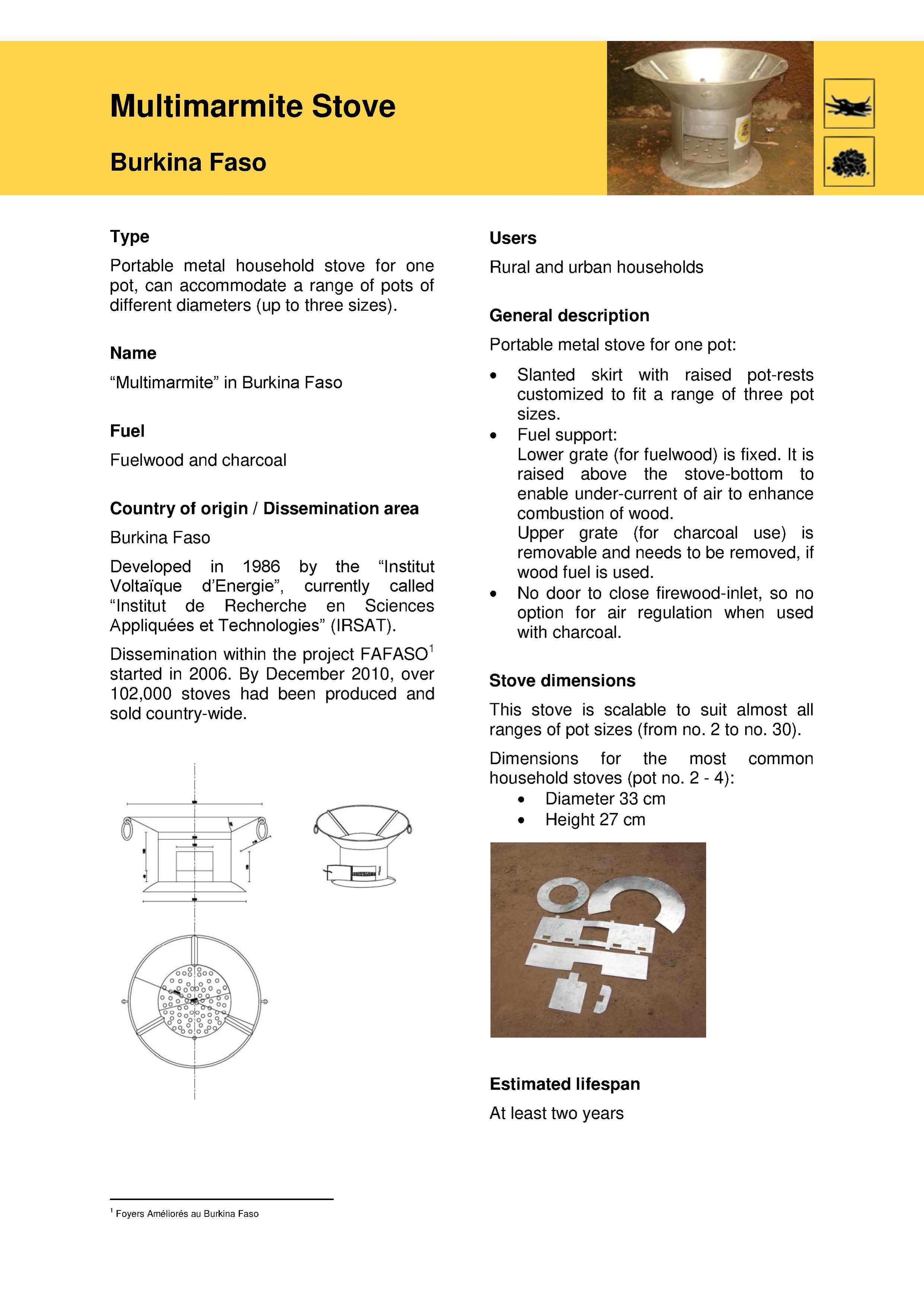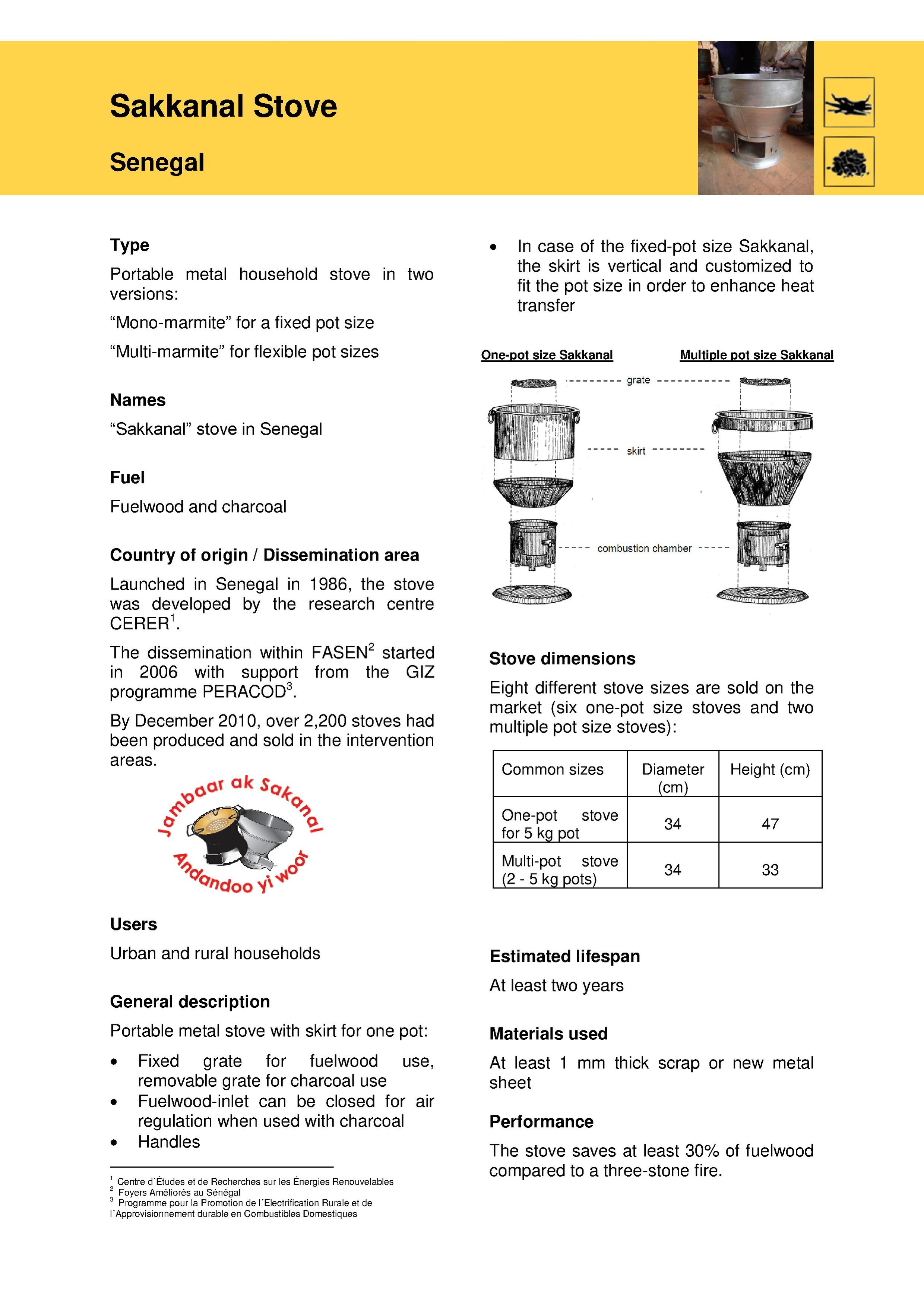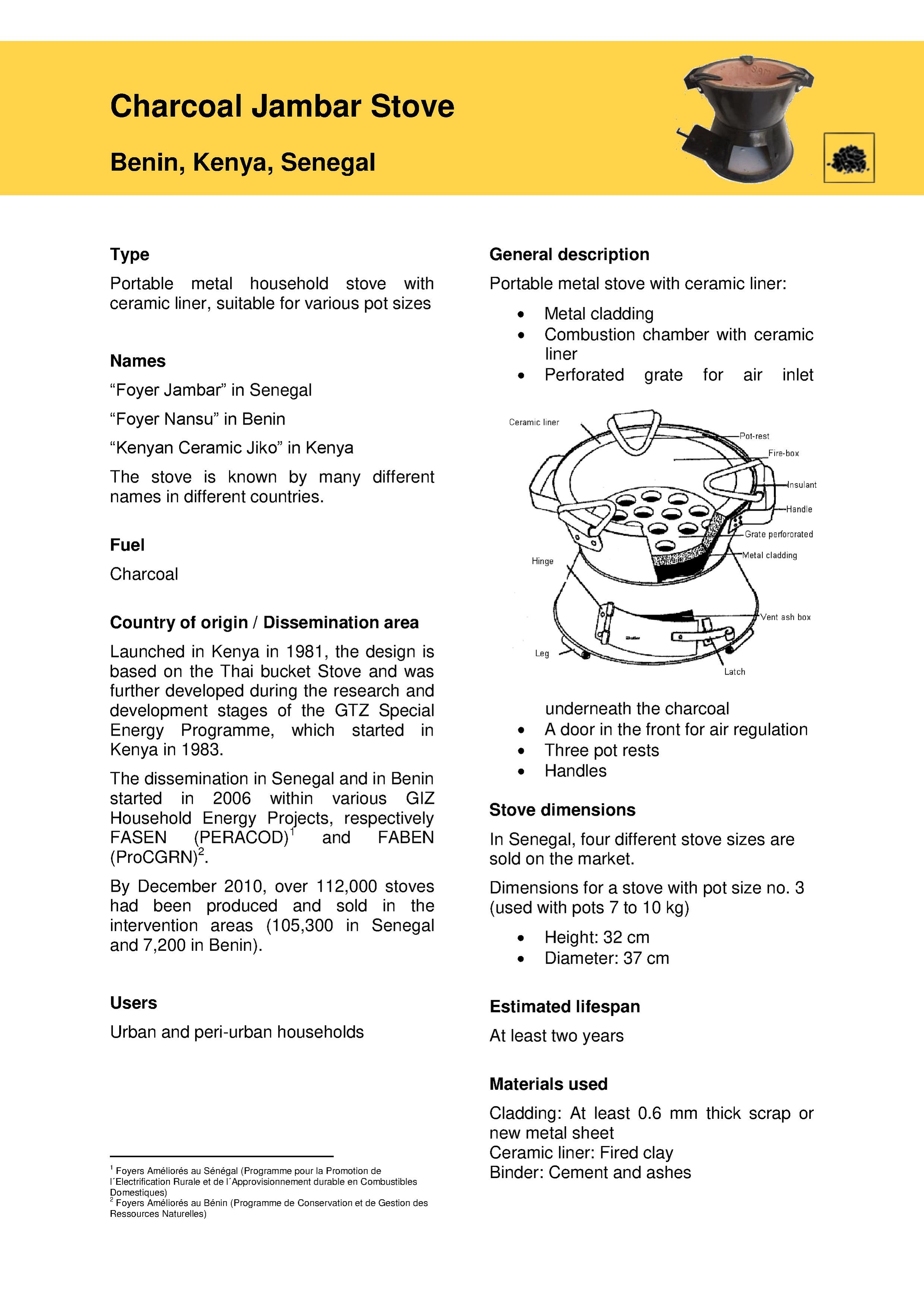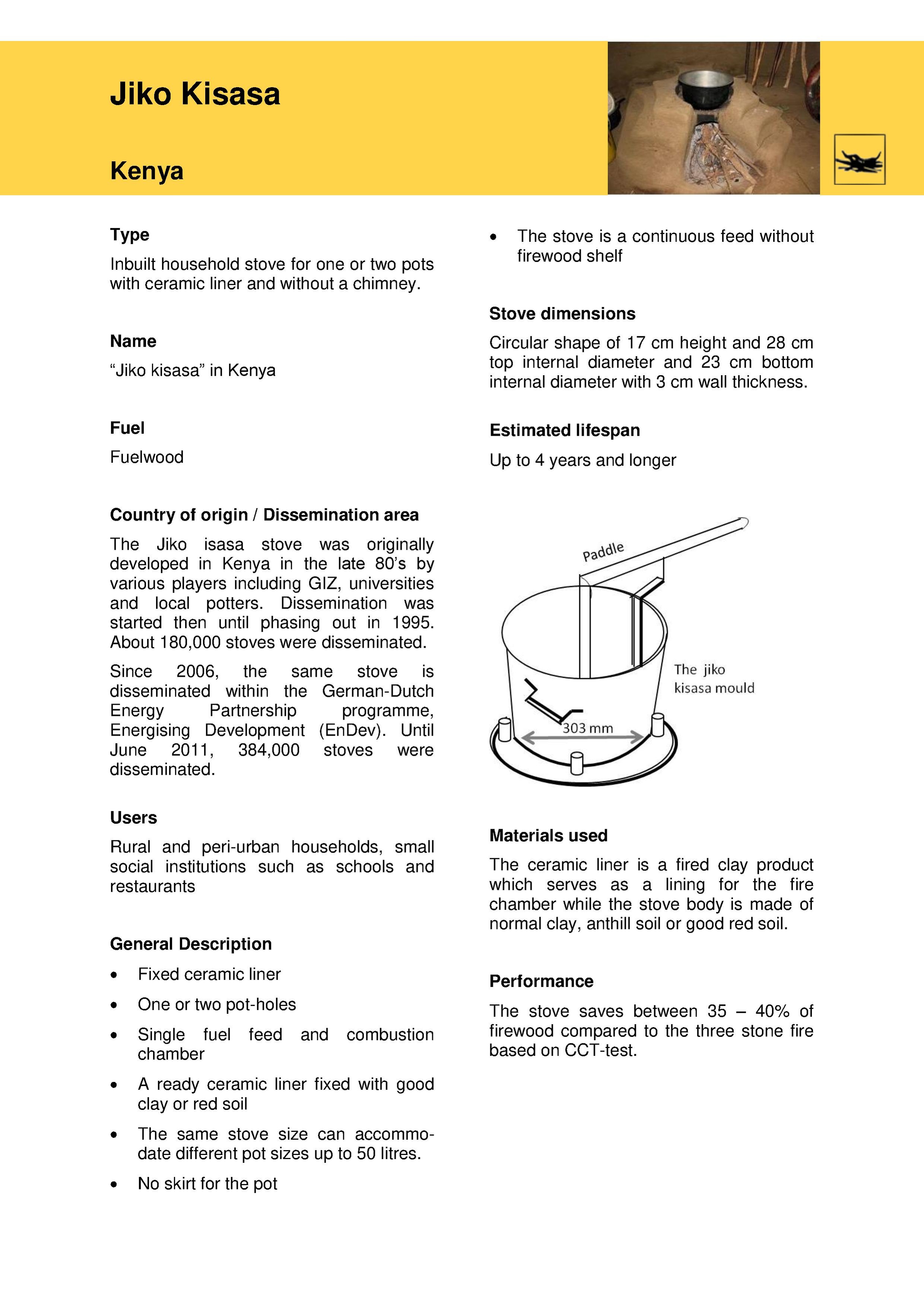Knowledge fuels change
For over a decade, Energypedia has shared free, reliable energy expertise with the world.
We’re now facing a serious funding gap.
Help keep this platform alive — your donation, big or small, truly matters!
Thank you for your support
Difference between revisions of "Charcoal Cookstoves"
***** (***** | *****) |
***** (***** | *****) |
||
| Line 31: | Line 31: | ||
{| border="1" cellpadding="1" cellspacing="1" width="100%" | {| border="1" cellpadding="1" cellspacing="1" width="100%" | ||
| + | |- | ||
| + | | | ||
| + | '''Nansu Unfired Clay Stove''', Benin (2011) | ||
| + | |||
| + | [[File:GIZ HERA 2011 Nansu C ramique Non Cuit Benin.pdf|border|left|Add caption here]] | ||
| + | |||
|- | |- | ||
| | | | ||
| Line 45: | Line 51: | ||
|- | |- | ||
| | | | ||
| − | ''' | + | '''Sakkanal''', Senegal (2011) |
| − | [[File:GIZ HERA 2011 | + | [[File:GIZ HERA 2011 Sakkanal Senegal.pdf|border|left|Add caption here]] |
|- | |- | ||
| Line 62: | Line 68: | ||
|- | |- | ||
| − | | | + | | <br/> |
| − | |||
| − | |||
| − | |||
| − | |||
|} | |} | ||
| − | [[GIZ HERA Cooking Energy Compendium|--> Back to Overview GIZ HERA Cooking Energy Compendium]]<br/> | + | [[GIZ HERA Cooking Energy Compendium|--> Back to Overview GIZ HERA Cooking Energy Compendium]]<br/><br/> |
| − | [[Category:Cooking Energy Compendium|Cooking_Energy_Compendium]] <br/>[[Category:GIZ HERA|GIZ_HERA]] <br/> | + | [[Category:Cooking Energy Compendium|Cooking_Energy_Compendium]] <br/>[[Category:GIZ HERA|GIZ_HERA]] <br/> <br/> |
Revision as of 15:07, 15 February 2012
--> Back to Overview GIZ HERA Cooking Energy Compendium
Cooking with charcoal
Charcoal is charred wood, which has lost all the moisture and most of the volatile contents in the production process. Thus it is a energy-dense light-weight (on energy value per weight), easy-to-handle and convenient fuel which burns without developing much smoke other than during lighting. These properties make it a preferred fuel especially in urban and peri-urban areas. Few people make their own charcoal. It is mostly produced in rural areas as an income generating activity and sold into the more urban areas where firewood collection is less feasible and people have paid jobs resulting in purchasing power to buy fuel. The main disadvantage of charcoal is its highly inefficient production process: a high part of the wood’s energy content is lost without further use during the charring process. Unlike during collection of dead wood for firewood, for charcoal production live trees are cut, thus contributing to forest degradation.
In contrast to wood, cooking with charcoal requires the use of a stove. Most traditional charcoal stoves are made of scrap metal with no option to regulate the burn-rate of the fuel and often without pot-rests, so that the pot sits directly on the charcoal. This causes extremely high emissions of potentially lethal carbon monoxide. It wastes a lot of fuel, as carbon monoxide is unburnt fuel with a high energy value. The lack to regulate the air supply and turn down the heat during the simmer-phase also leads to unnecessary wastage of fuel.
In Africa, the most widespread example of an improved charcoal stove is the Kenyan Ceramic Jiko (KCJ). Similar designs have been replicated in many parts of Africa in the last two decades, sometimes with such success, that e.g. in Eastern Africa they can be considered the new baseline technology. This stove type has a ceramic liner in a metal cladding. The ceramic liner protects the outer metal structure from deterioration by the fire. It also provides improved insulation, hence higher efficiency and a hotter flame. It has pot-rests creating a small gap between the charcoal and the pot, to allow some of the produced carbon-monoxide to burn off. Combustion is thus improved and less dangerous smokes emitted. Due to these design characteristics the stove can save up to 40 % of charcoal compared to traditional charcoal stoves while reducing toxic emissions. As most charcoal is purchased, users see the monetary benefit of saving fuel, which has made this stove model an economic success.
More recent efforts to design even more efficient charcoal stoves than the KCJ also include light-weight all-metal designs. These are relevant for areas, where suitable clay is lacking or where it is found challenging to combine the two trades of metal and ceramic workers to produce one common product. New generation charcoal stoves were a major topic at Stove Camp 2010 held at Aprovecho Research Institute. First attempts to (re)define design principles for charcoal stoves are documented here: http://www.bioenergylists.org/content/charcoal-stove-design and http://www.bioenergylists.org/files/HaitiCharcoal_final.pdf
Options to improve charcoal stoves can be made in the dimensions of durability and better heat use: the main agent to control the burning of charcoal is air. To regulate the heat output, the airflow must be adjustable.
The heat output is mostly by radiation: charcoal radiates to all directions, not only upwards towards the pot, thus it is crucial to minimize heat loss to the bottom and the sides of the stove by recovering the heat. Cleverly designed air circulation in the stoves can recycle heat and create draft needed for efficient combustion.
Although radiation decreases exponentially with the distance, the pot must not be put directly on the glowing char. A gap should be allowed where ideally fresh secondary air can be directed above the charcoal to ensure a complete combustion of the carbon monoxide. This reduces emissions and increases fuel efficiency.
Summary of desired features:
- durability
- appropriate insulation or recovery of the radiated heat
- high and adjustable airflow to maximize combustion
- low emissions of carbon monoxide
Charcoal stoves
History and data on the KJC: http://www.solutions-site.org/cat2_sol60.htm
|
Nansu Unfired Clay Stove, Benin (2011) |
|
Burkina Mixte, Burkina Faso (2011) |
|
Multimarmite Stove, Burkina Faso (2011) |
|
Sakkanal, Senegal (2011) |
|
Jambar Stove, Charcoal, Benin, Kenya, Senegal (2011) |
Jiko Kisassa, Kenya (2011) |

